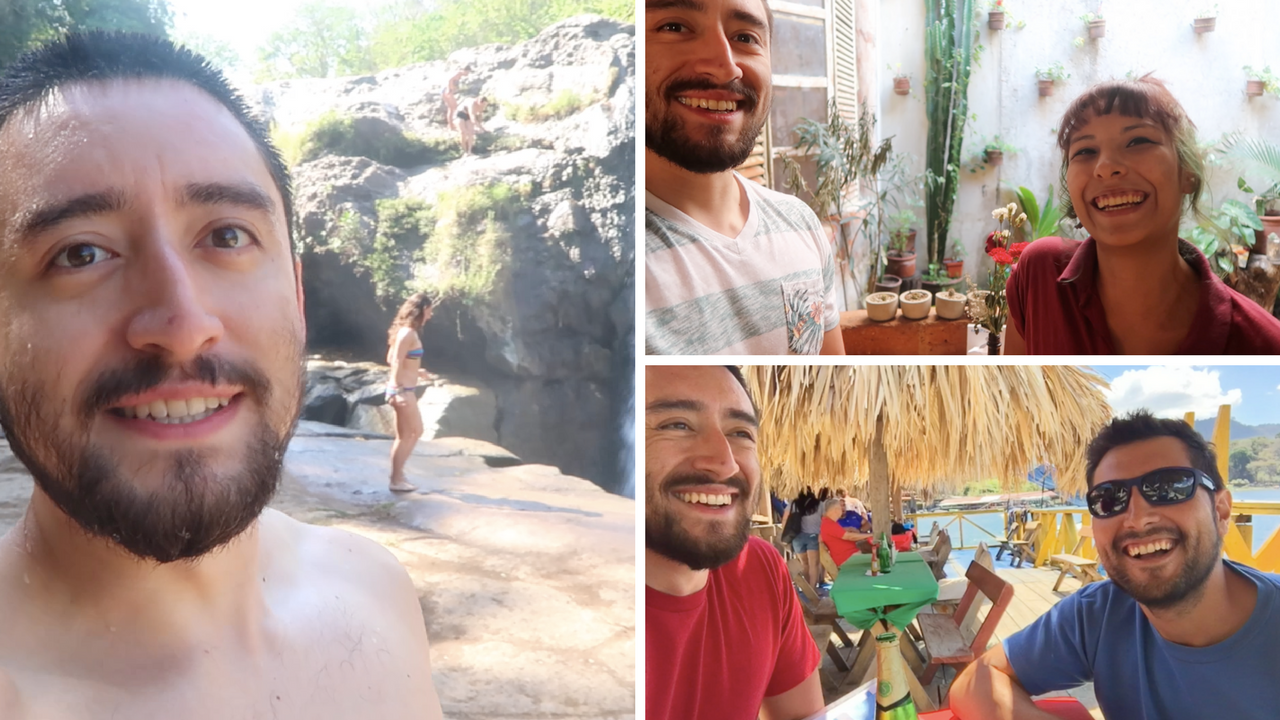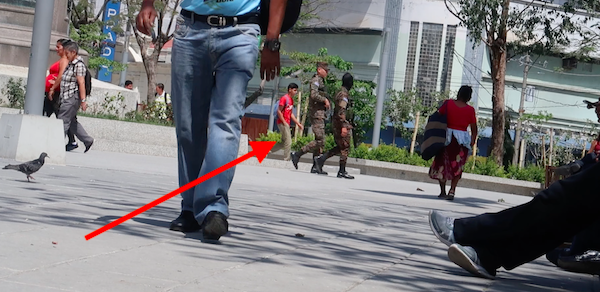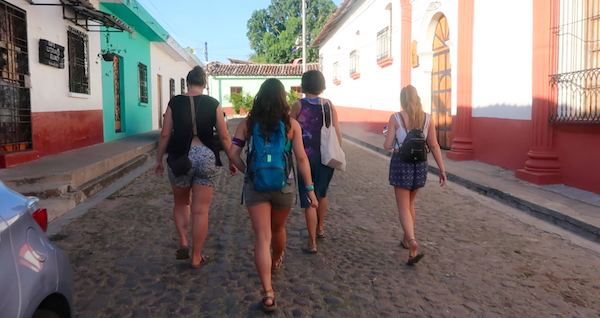A few weeks ago, I visited El Salvador for the first time in my life.
Well, not exactly the first time. I was adopted from there when I was 1 year old and grew up in a small Massachusetts suburban town.
I spent 10 days traveling around El Salvador and saw a lot of the major sites, including El Tunco, San Salvador, Santa Ana, National Park Cerro Verde, Lago Coatepeque, Tazumal Ruins, Suchitoto, and Chalatenago.
When I was getting ready to leave, I was feeling very nervous and uncertain. I had read so many bad things about the country, discussing the gangs, robberies, violence, and checkered past. Not to mention that my parents visited during a time of turmoil (circa 1991) and had told me some wild stories.
I didn’t know what to expect. Some travelers said it was completely fine (as long as you didn’t do anything stupid). Others said that while some areas are safe, others are very dangerous. It was hard to get a good read on the situation.
I also came across one blog post written by this white chick talking about her time in El Tunco. Haha, that made me feel a lot better. I figured that if a white female can survive there with a bunch of her friends, than I can too.
Talking about my upcoming trip with friends and family members didn’t help my nerves. I had one friend who spent a lot of time in South America tell me to be very careful and to come back alive. Oh boy!
Looking back, it’s amazing how much the media skewed my view of this country…
What El Salvador is REALLY Like
Throughout my trip, I didn’t encounter any moments that made me feel unsafe. I stuck to the safe areas that were brought up by other travelers, and talked with a lot of people while I was there to get a sense of the country.
The consensus was that as long as you stay away from the bad areas, you should be fine. It’s just like any other country or even large city. There are good sections and not so good sections. The touristy spots naturally tend to be more safe.
When I first arrived, it was a little bit jarring to see lots of body guards with shot guns guarding their shops or soldiers walking around with military-style weapons in San Salvador.
Definitely increased the tension, but it also made me feel a bit more safe, knowing that the area was guarded.
Another major culture shock was that everyone speaks ONLY Spanish. The only people that I met throughout my trip that spoke any English were the tour guides or my Airbnb hosts. You gotta know Spanish to get around.
That can be kinda scary because a soldier or policeman can be talking to you, and unless you speak Spanish, you won’t really know what they’re saying.
I actually vlogged my entire trip so that I could capture my authentic reactions. Basically, I went from having my guard up and being hyper vigilant to relaxing and realizing that for the most part, I was safe. I came to the conclusion that El Salvador isn’t nearly as bad as I thought it was.
How to Stay Safe in El Salvador
There are several key ways that you can ensure your safety when traveling in El Salvador. Rather than judging the safety of the country as a whole, take the approach of writing down which cities and areas are safe or not so safe.
- Only go to touristy regions. This is a no-brainer. You don’t want to be going into the suburbs of San Salvador just because you wanna get some cool photographs. Stay where the commercial districts are like Plaza Futura in San Salvador or El Tunco in the Libertad district.
- Talk to other travelers. If one of your destinations is a question mark, then ask around. See what others say. Use the intelligence that is around you that you can’t find in a book or blog post.
- Learn basic Spanish. This is actually to ensure your safety so that you can get around, understand people, ask questions, etc.
- Don’t rile emotions or cause arguments. One night when I was at a bar in El Tunco, this one guy had a beef with another guy over a girl. There was a lot of yelling and some pushing. You never know if the other person has a knife or a gun (or who they know). Don’t be dumb.
- Keep positive body language and be aware of your surroundings. This goes for any city. People prey on the weak. If someone senses you won’t put up a fight or you’re lost, you’re more likely to be a victim.
- Don’t go to rural or secluded areas without a guide. My tour guide told me of times when tourists were robbed going up volcanos alone or going on backpacking treks alone. Usually the person would have a machete or other weapon and just ask for payment (or your camera).
- Don’t go out at night alone or be smart and take a taxi. It’s okay to walk around in some places like El Tunco alone, but even my Airbnb host told me it’s not so great to walk around Santa Ana late at night. If you’re going out in San Salvador, take a taxi.
- Stay away from: Ilapongo, Soyapango, Mejicanos, Apopa, Zacamil, Ciudad Delgado, Mejicanos, San Marcos, San Martin, Montserrat. (From my research)
Of course, there are more precautions that you can take like having two wallets, not flashing expensive things, making sure you only use trusted service providers, etc. I feel like that is more of the common sense stuff.
Some of the people I stayed with in one of my hostels were completely okay with things like hitchhiking, taking the busses, etc. These were American women and men.
I imagine that if you’re more of the free spirited type, you’d think that some of my tips, like not going backpacking without a guide, might hamper your authentic trip, but you gotta admit it will also open you up to risks.
A Solid 10-Day Itinerary
I think that 10 – 15 days is a good amount to spend in El Salvador, as you’ll be able to see most of the major sites, get a feel for the culture, and connect with some other backpackers along the way.
Your itinerary is going to depend on how you like to travel and what you like to do. Personally, I love chilling at the beach. I don’t like to be too rushed. I like to have some days where I can write, vlog, or check on my business. Of course, I also want to do cool things like go cliff jumping, hike volcanos, and visit ancient ruins.
I put together an easy-to-follow itinerary that will give you a slice of everything. You can spend some days surfing or chilling at the beach. Others visiting ruins. And some hiking in nature. You can also modify this depending on what you like to do!
Along with sharing some of the neat places that I visited, I also link you to a couple of resources, like the hostel that I stayed at in Santa Ana or the tour company I used to see cool sites. You’ll even discover one major announcement about the core purpose of my trip… which was to find my birth mother.
Overall, I think that El Salvador has a PR problem. There are too many negative media stories covering the tragic events happening in the country, the instability, and the violent gangs. This creates a skewed worldview of the country, and is the reason why more people aren’t visiting.
As more people, like you and me, visit this country and get a feel for what it’s ACTUALLY like, more and more positive stories will start to emerge from this region of the world. I think that will be good for the economy and hopefully, the country’s infrastructure.
Let me know what you think in the comments down below!




